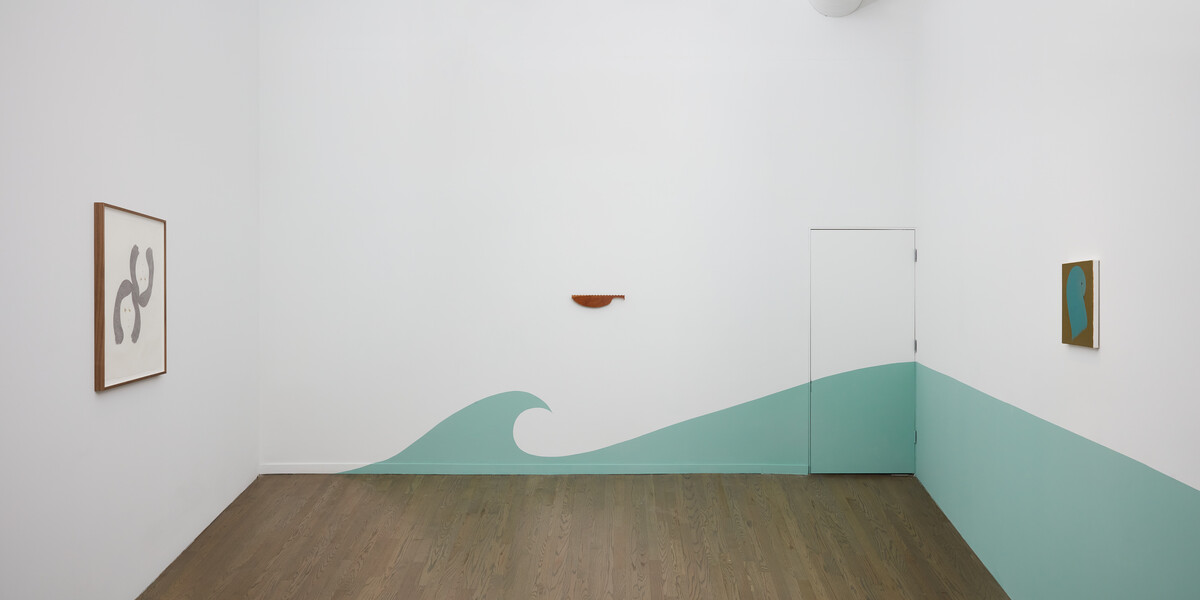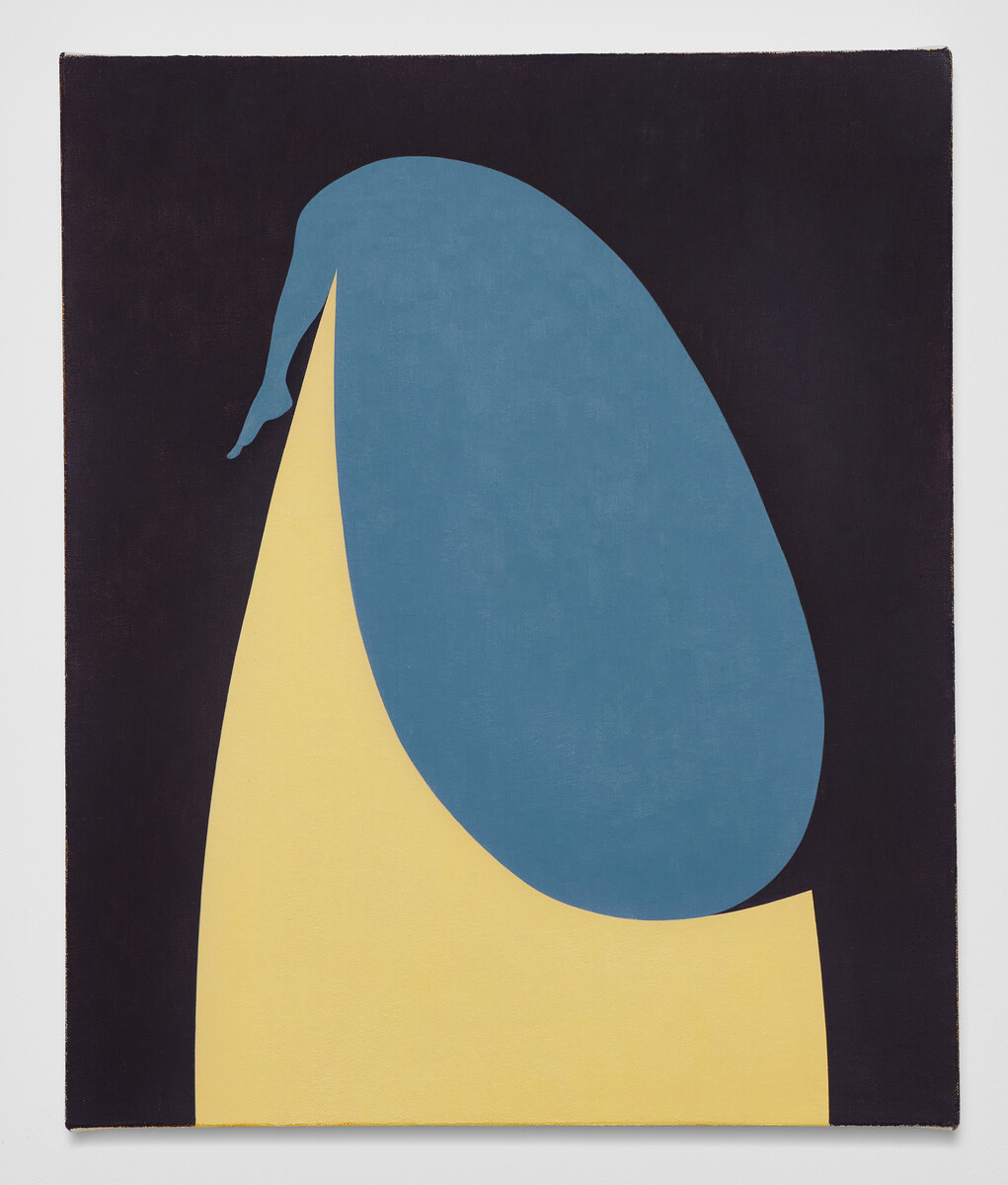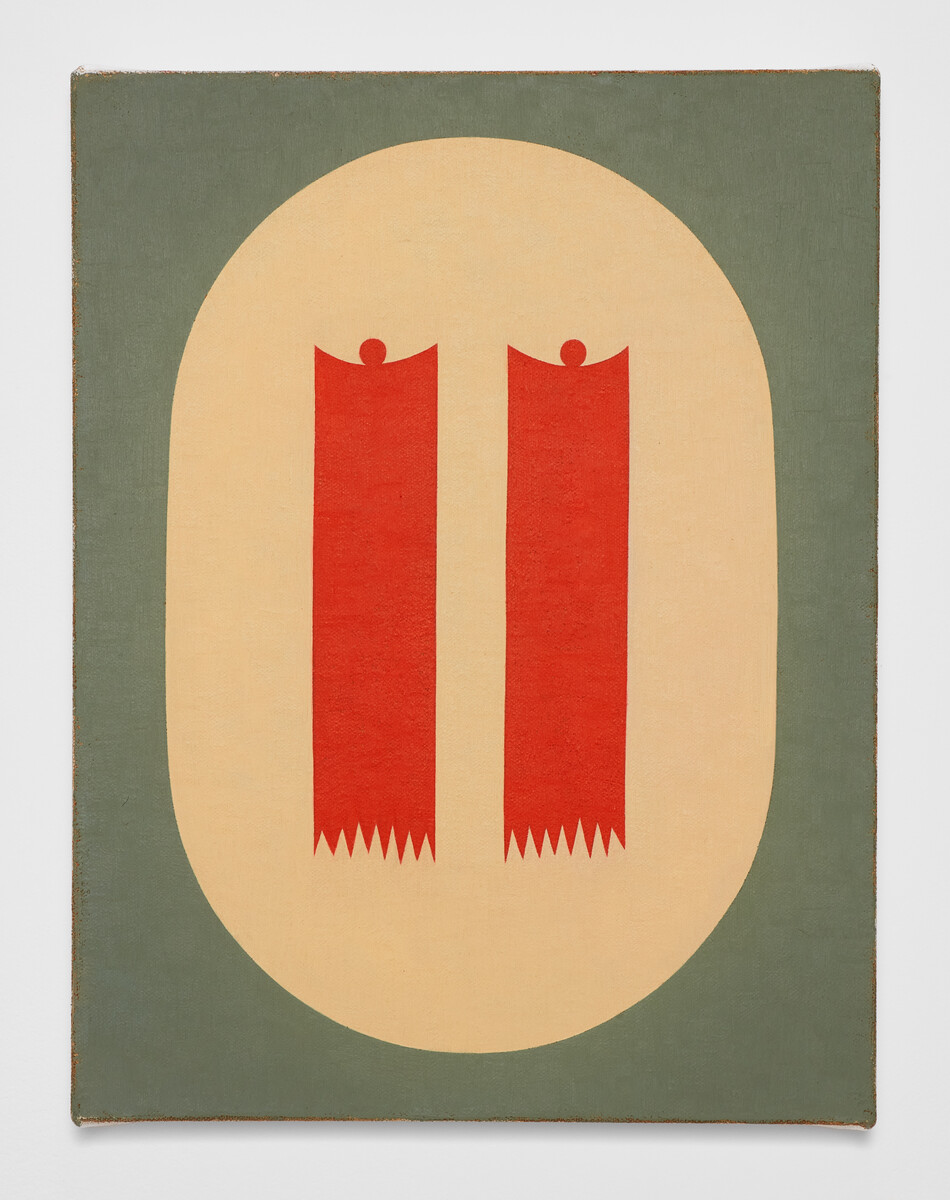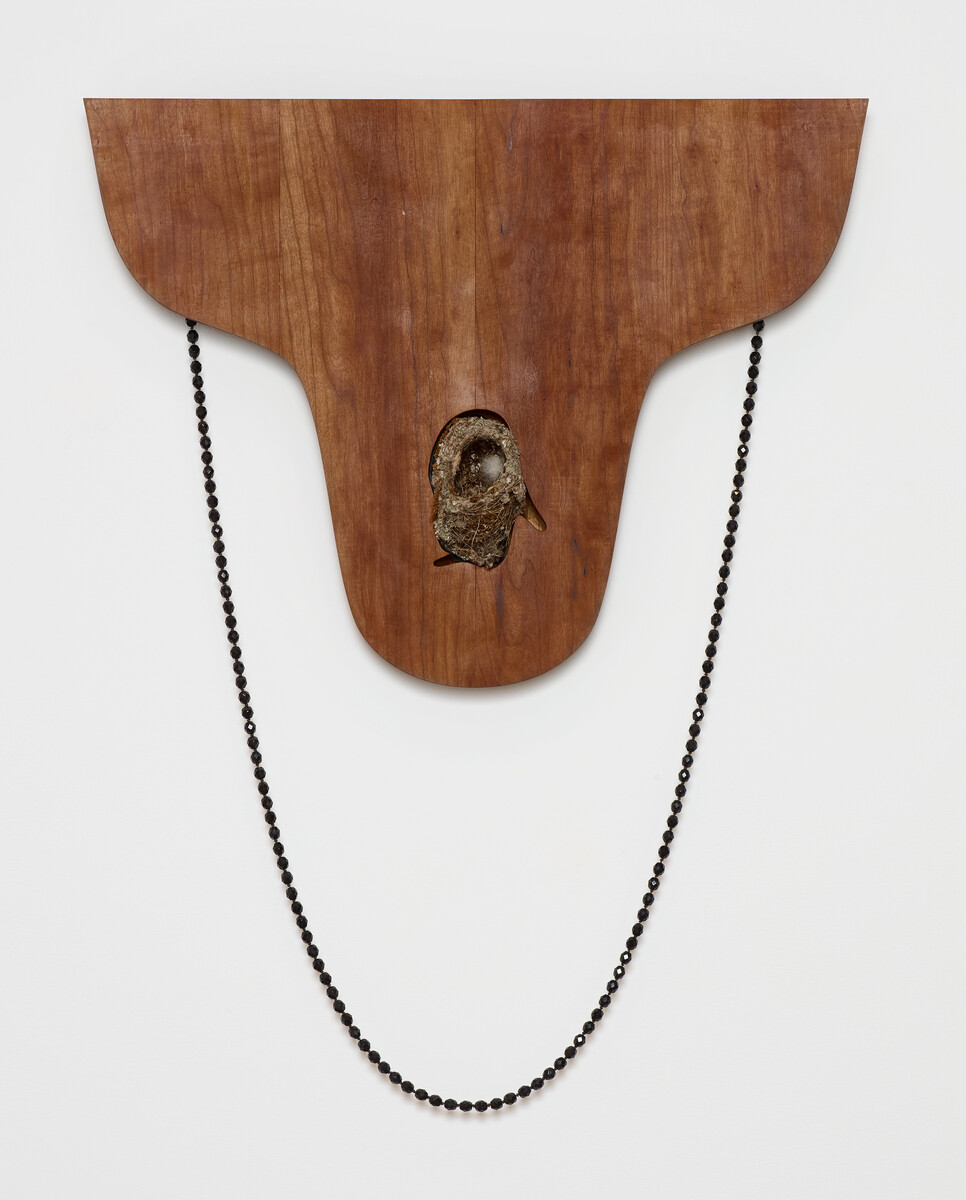
PATRON is proud to present The Deep Element, our second solo exhibition with Chicago-based artist Alice Tippit. Tippit deftly uses color, image, and language in a looping game of “yes, and…” continually twisting what we do, don’t, and think we know. The Deep Element embraces the gallery space itself, with a single mural element that flows along the east side of the gallery, a watery frieze set at floor level. Her signature intimately-scaled paintings, collaged works on paper, and wooden wall sculptures—a recent expansion of her practice—share this environment.

Tippit’s works for the exhibition are steeped in thinking about the inadequacies of language when confronting our interior landscape. The complex psychological relationships we have with others—much less ourselves—are basically impenetrable without calling upon seemingly unrelated phenomena to describe the sensation. Emotions swell, they flood, they wash over the beach of the mind; figures of speech that allow us to allude to mental states that threaten to overwhelm us, but these are also clichés that have become nearly meaningless in their ability to capture our imagination. As far as Tippit is concerned, images serve us better, offering a flexibility to communicate where the poetics of language fail.

Sound (2022) begins the exhibition and sets its tone. A hammer hangs uselessly at the top of the picture frame, bent inward upon itself against a stormy field of grey. Throughout, Tippit carefully stages opposing concepts, toying all the while with our keen ability to sort out differences and conjure meaning out of scraps of information. Here, an antique lace collar can be a face, a flap, a sail. Elsewhere, bodies, rather parts of them, are deployed as stand-ins for moods. In Vast (2024) a single eye, reddened, glares; its relationship to other elements of the image suggest instead the mouth of a face in which the eyes have been replaced by the tears they once shed. References to vessels, both as container and as conveyance, proliferate. Whether these receptacles are adequate is one of many questions left unanswered. The lack of resolution in her work is intended to forestall the closure of meaning, such that we may linger a little longer and allow an unfolding of sorts. In the end, we may not come to any one conclusion, but, as in life, that may be for our betterment.



Artforum: Alice Tippit
Artforum
Dec 1, 2024
Dec 1, 2024
12 Art Shows to See in Chicago This Fall
Hyperallergic
Sep 29, 2024
Sep 29, 2024



















